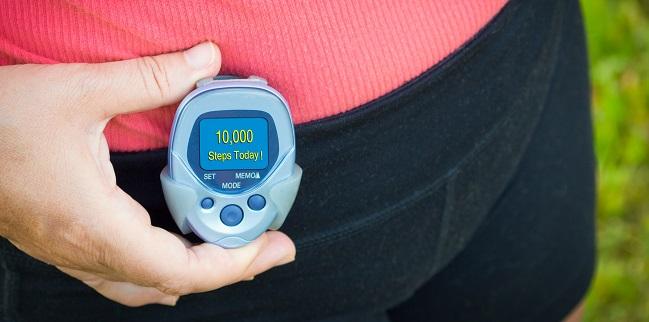Walk and Talk: Step-Counting Devices Work Best When Paired With Doctor Consults
Pedometers and accelerometers in people with cardiometabolic conditions can help improve physical activity as part of a bigger plan.

Use of pedometers and accelerometers by people with cardiometabolic conditions can lead to small but significant increases in physical activity over several months, according to a new meta-analysis. But the type of device and the quality of consultation with professionals over follow-up have a big impact on the degree to which activity actually improves.
“We found evidence that complex interventions that combine the use of monitoring devices (particularly pedometers) with regular consultations with health professionals might be an effective way of increasing physical activity and reaching the recommendations set out by governments and agencies for people with cardiometabolic conditions,” write lead author Alexander Hodkinson, PhD (University of Manchester, England), and colleagues. “It is likely that giving feedback and lifestyle advice to patients on a regular basis supported the effectiveness of these interventions.”
For the study, published online yesterday in JAMA Network Open, the researchers included 4,856 participants with cardiometabolic conditions—including type 2 diabetes (or at high risk for), obesity or being overweight, and CVD—from 32 randomized trials using accelerometers or pedometers to either increase physical activity, prevent disease, or manage weight.
Over a mean follow-up period of 32 weeks, there was a small-to-medium significant increase in physical activity among those randomized to use a monitoring device over those who did not (standardized mean difference 0.39; 95% CI 0.28-0.51). Accelerometer-based interventions alone showed a small increase in physical activity versus comparators among 20 studies (standardized mean difference 0.30; 95% CI 0.16-0.44), while pedometer-based interventions alone demonstrated a medium increase in physical activity among 15 studies (standardized mean difference 0.52; 95% CI 0.32-0.72). Overall, the authors noted that heterogeneity was “high” for pedometer use and “moderate” for accelerometer use.
Among the pedometer-based interventions used, the study participants reported an average increase of 1,702.85 steps per day compared with controls, which is lower than what’s typically recommended, they point out. “For instance, the UK National Obesity Forum classifies 3,000 to 6,000 steps per day as sedentary, Northern Ireland’s Public Health Agency promotes an additional 3,000 steps, and the America on the Move campaign suggests an additional 2,000 steps each day to stop weight gain.”
Generally, physical activity performance that was based on total session times showed greater improvements with longer periods of engagement in physical activity. However, 18 studies did not report session length and thus could not be included.
On multivariate analysis, consultations with a health professional (P < 0.001) and pedometer versus accelerometer interventions (P = 0.002) significantly predicted a greater degree of physical activity improvement. In further post hoc subgroup analyses, pedometer interventions incorporating consultations with health professionals were associated with the greatest increases in physical activity followed by supervised accelerometer interventions.
“Several studies have suggested positive associations of multimodal pedometer interventions with physical activity levels in a range of populations, including those with type 2 diabetes and cardiac conditions, but this is the first study, to our knowledge, to highlight the role of regular consultations in the association of pedometer interventions with physical activity in people with cardiometabolic conditions,” Hodkinson and colleagues write. “This finding warrants consideration in future trials and further investigation using more robust methods such as individual participant data meta-analyses.”
They advocate for studies looking at longer-term outcomes associated with pedometer and accelerometer use and whether the physical activity increases seen here can be sustained.
Yael L. Maxwell is Senior Medical Journalist for TCTMD and Section Editor of TCTMD's Fellows Forum. She served as the inaugural…
Read Full BioSources
Hodkinson A, Kontopantelis E, Adeniji C, et al. Accelerometer- and pedometer-based physical activity interventions among adults with cardiometabolic conditions: a systematic review and meta-analysis. JAMA Network Open. 2019;2(10):e1912895.
Disclosures
- This study was funded by the National Institute for Health Research School for Primary Care Research.
- Hodkinson reports no relevant conflicts of interest.


Comments